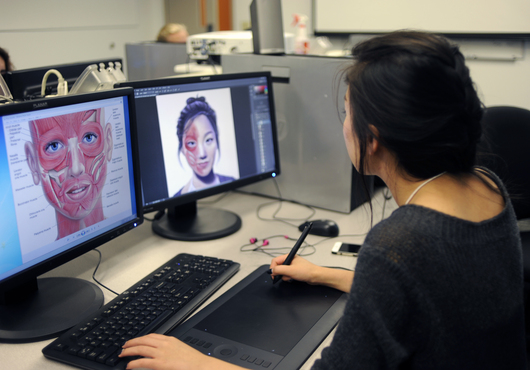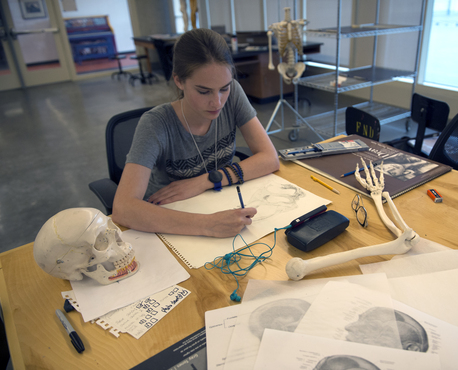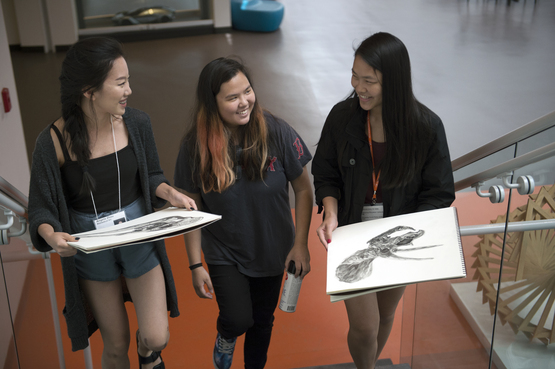
Continuing Education . Pre-College . Classes . Life Sciences Illustration
Life Sciences Illustration
- 2D Design
- Animation
- Craft + Design
- Designing for Interior Spaces
- Digital Painting
- Foundation in Drawing
- Game Design
- Graphic Design
- Illustration
- Life Sciences Illustration
- Painting
- Photography
- Printmaking
- Product Design
- Sculpture + 3D Design
- Video Production
This unique course combines traditional drawing with digital drawing techniques to illustrate figurative anatomy and other scientific rendering.
Session 1: July 7–19, 2024
Through observation, figure drawing, and the use of line, motion, and media, you will learn how the amazing human body moves in space. We will explore human anatomy fundamentals as they relate to the development of artistic skills in figurative proportion and visual expression. You will learn how the skeleton and muscles form the figure; what structures enable motion; and specific methods for improving observational figure drawing.
Throughout our anatomical adventure, we will utilize a variety of techniques and materials to visually reveal various anatomical layers of the human form, including colored pencil, charcoal, graphite, and ultimately digital rendering in Photoshop.
Exercise both your artistic creativity and your scientific curiosity as you illustrate the inner workings of the natural world. Life Sciences Illustration is an ever-growing field and CIA is proud to offer one of the few programs of its kind in the country.
Projects
The first week of the course is designed to strengthen students’ understanding and use of the human form within their work through observational drawing from a model and lectures. Other aspects of the Life Sciences field, such as zoological and botanical illustration, will be explored with a series of smaller projects.
The second week of the course will focus on the finishing touches of an illustration, including the use of color, texture and digital rendering techniques. Students will visit the Cleveland Botanical Gardens and the Cleveland Museum of Natural History to find inspiration for their projects, and to practice their observational drawing skills.
Example projects and topics include portrait studies, skeletal and muscular anatomy, drawing a specimen from observation, utilizing graphite and charcoal, digital rendering, and using a Wacom tablet.
Apply to Pre-College today!
Start your application today. Priority/scholarship deadline is February 15, 2024.











